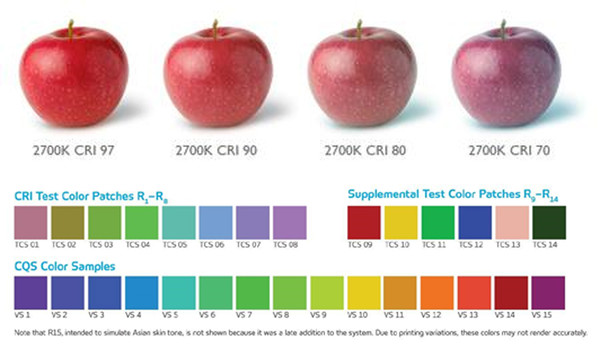The LED lamp is fairly new to the market and consumers. Saving energy was part of their creation and one of the reasons we specify them. Initially we looked at lumen output as compared to an incandescent or fluorescent lamp. For example, a 100W incandescent, a 23W fluorescent and an 18W LED all are about 1600 lumens.
Lumens are still important to calculate, but now, as specifiers, we are looking at color not in temperature, like Kelvin, but CRI: Color Rendering Index. LED blands out colors. We want a high quality of 82 CRI at minimum. The majority of CRI is R1—R8 pastel colors. LED’s with a high R9 (red content) show better color quality. This is especially important in retail, healthcare (visibility of blood veins), grocery and art displays.
We are told LED’s will last 25 years! But during this time the lumens diminish and so does the color rendering. Your closet full of nice, white dress shirts were once bright white but as time goes on they will look dinged. An LED should have a minimum of 50,000 hours of life. Better thermal management results in a longer life. Look for LED’s with L70 or better light output and 82 CRI minimum.

Look at lighting as a true value to your environment. r.o.i. = more than saving energy.
Information from the Crites, Tidey and Associates Lighting Forum XVI on September 15th and 16th.
